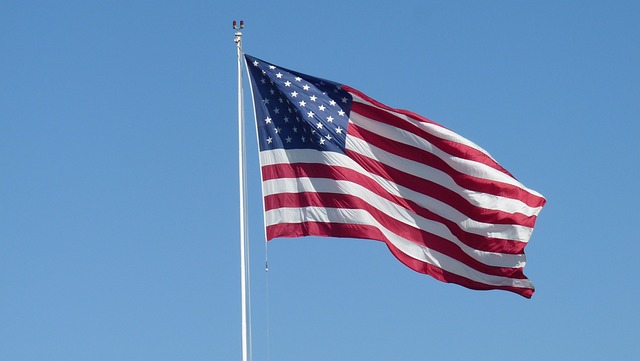The American flag, or "Stars and Stripes," is a deeply symbolic representation of national unity, pride, and history. Its design has evolved to include 50 stars and 13 stripes, each element reflecting a state and one of the original colonies, respectively. The stars signify the foundational ideals of liberty, justice, and democracy, while the colors red and white stand for valor and purity. Throughout its history, the flag has been updated to include new stars as states joined the Union, reaching its current form in 1960 after Hawaii became the 50th state. Vintage and historical flags, including those with a different number of stars from different eras, are highly valued by collectors who seek "old American flags for sale near me" as tangible pieces of history that honor America's heritage and celebrate its values. These flags serve not only as collectibles but also as educational artifacts that connect us to our country's rich past and the principles it stands for, inspiring appreciation and respect for the collective memory and shared identity they represent. Collecting and preserving these flags is a way to honor the history and evolution of the United States.
The American flag, a symbol of unity and pride, is steeped in history and rich with meaning. From its colonial beginnings to the revered banner we recognize today, each iteration reflects the evolving spirit of the nation. This article explores the profound significance behind the stars and stripes, the colors’ deeper implications, and the stories carried by retired flags—often referred to as “Old Glory.” For those with a deep appreciation for this emblem of freedom, seeking out authentic “old American flags for sale near me” connects us directly to our country’s storied past. Join us as we delve into the historical evolution of these symbols and the cultural heritage they embody.
- Historical Evolution of the American Flag: A Journey from Colonial Banners to the Present Day Standard
- The Stars and Stripes: Understanding the Significance of Each Star and Strip on the National Flag
- Symbolism in Color and Design: What Do the Colors and Patterns on the U.S. Flag Represent?
- Old Glory's Journey: The Stories Behind Retired Flags and Their Role in American History
- Collecting and Preserving National Heritage: Where to Find Old American Flags for Sale Near Me and Why They Matter
Historical Evolution of the American Flag: A Journey from Colonial Banners to the Present Day Standard

The American flag, a potent symbol of national identity and pride, has undergone a remarkable historical evolution from its colonial beginnings to the present-day standard. The journey of the flag reflects the country’s political, cultural, and social changes over centuries. The earliest American flags bore designs resembling the British Union Jack, reflecting the American colonies’ origins as a part of the British Empire. Over time, as the United States forged its own path, the flag evolved to signify America’s newfound sovereignty and independence.
Throughout the 19th century, the flag saw significant changes, with the number of stars representing the states increasing as the nation expanded westward. Each addition of a star after the adoption of the first official flag in 1777 marked a new chapter in American history. Today’s flag, with its 50 white stars on a field of blue against 13 red and white stripes, has been refined through the years to represent a unified nation. Those interested in this rich tapestry of history can find vintage flags, including old American flags for sale near me, which serve as tangible connections to our country’s past. These historical artifacts are not just mementos but reminders of the enduring spirit that shaped America and continue to inspire its citizens today. Collectors and history enthusiasts often seek these antique flags to honor their heritage and the evolution of this significant emblem.
The Stars and Stripes: Understanding the Significance of Each Star and Strip on the National Flag

The Stars and Stripes, commonly known as the American flag, is a powerful emblem of national identity and history. Each star on the blue field represents a state in the Union, with the number of stars reflecting the total number of states at the time of their adoption into the flag. As new states joined the Union, the flag was modified to include additional stars, reaching its current count of fifty after Hawaii became the 50th state in 1959. The significance of each star goes beyond mere geometry; it symbolizes the ideals upon which America was founded: liberty, justice, and democracy. These ideals continue to resonate with citizens and are celebrated during patriotic events, making vintage and historical American flags, such as those reflecting earlier incarnations of the flag with fewer stars, highly sought after by collectors and history enthusiasts who refer to ‘old American flags for sale near me’ in their searches.
The horizontal stripes alternating red and white are a visual testament to the country’s origins as a breakaway colony from Britain, symbolizing the 13 original colonies that declared independence in 1776. The red stripes honor the courage and valor of the American people, while the white represents the purity of their intentions in the struggle for freedom. These colors also serve as a reminder of the bloodshed and sacrifices made to preserve the Union and its values. Today, these stripes continue to be a symbol of unity and solidarity among Americans, and items featuring this classic design, including flags that harken back to different historical periods, are available for purchase under search terms like ‘old American flags for sale near me’. Collectors and flag enthusiasts often value these pieces not only for their historical significance but also for their aesthetic appeal and craftsmanship.
Symbolism in Color and Design: What Do the Colors and Patterns on the U.S. Flag Represent?

The United States flag, commonly known as the “Stars and Stripes,” is a potent emblem of national identity, history, and values. Its design and colors carry deep symbolism that reflects the country’s diverse heritage and ideals. The field of stars on the blue union represents the 50 states that make up the nation, with each star symbolizing a state in the Union. This arrangement exemplifies unity and the collective strength derived from the aggregate of individual states. The thirteen stripes, alternating red and white, honor the original thirteen colonies that declared independence and formed the foundational basis of what would become the United States. The color red signifies valor and bravery, evoking the blood spilled during America’s fight for independence. White stands for purity and innocence, embodied in the freedom and justice upon which the country was established. These colors and their symbolism are woven into the flag’s design, a design that has remained relatively consistent since 1960, with only minor modifications before it.
For those interested in acquiring an historic representation of these symbolic elements, “old American flags for sale near me” can lead to discovering vintage and antique flags that have flown over American lands, bearing witness to the nation’s past. These flags often carry additional patina, telling tales of their use during different eras. The collective memory and history of a nation are preserved in such artifacts, making them valuable not only as pieces of Americana but also as tangible connections to the country’s heritage and the principles it stands for. Whether for personal use or as collectibles, these flags serve as a testament to the enduring significance of the flag’s symbolism.
Old Glory's Journey: The Stories Behind Retired Flags and Their Role in American History

American history is richly interwoven with the stories of the nation’s flags, each thread a narrative of valor, change, and continuity. Among these, Old Glory stands as a testament to the enduring spirit of the United States. Retired American flags, once flown over land and sea, are artifacts imbued with a past as diverse as the nation itself. These flags, now known as “Old Glory’s” – each with its own tale – are available for purchase near you through various outlets that offer old American flags for sale. They serve as a tangible connection to historical events, from peaceful days to moments of conflict and celebration. Collectors and history enthusiasts often seek these retired flags not only as memorabilia but also as symbols of their love for country and the preservation of its legacy. The journey of these flags is one of reverence and reflection; they have flown in times of national importance, bearing witness to significant milestones that have shaped American identity. Today, these flags can be found in collectors’ hands or retired honorably at local disposal sites. They remind us of our shared history and the enduring relevance of the principles for which they stood. The role of Old Glory in American society is not just ceremonial but educational and deeply personal; it underscores the value of preserving history and honoring the collective memory that ties us together as a nation.
Collecting and Preserving National Heritage: Where to Find Old American Flags for Sale Near Me and Why They Matter

Collecting historical artifacts, particularly old American flags, is a fascinating pursuit that allows individuals to connect with their nation’s past and understand the rich tapestry of events they have witnessed. These flags are not merely cloth; they are emblems of values, victories, and memories that span generations. For enthusiasts seeking to acquire a piece of this history, there are several avenues to find old American flags for sale near you. Local antique stores, historical societies, and collectibles shops often have an array of vintage flags available. Online marketplaces are also treasure troves for these items, where sellers from across the country list their finds, ranging from Civil War battle flags to early 20th-century banners. These artifacts hold significance not only as symbols of American heritage but also as tangible reminders of the evolution of our nation’s identity and the pivotal moments in its history.
Preserving these flags is crucial, as they serve as vital records of our collective past. Each stain, mend, or frayed edge tells a story. By maintaining these flags, we ensure that their stories are not lost to time. Proper preservation involves climate-controlled storage, gentle handling, and occasional professional restoration if necessary. These steps protect the integrity of the fabric and the colors, which often fade over time. Collecting and preserving old American flags is more than a hobby; it’s a way to honor our nation’s legacy and educate future generations about the history and symbolism they represent. This commitment to preservation not only safeguards these artifacts but also fosters a deeper appreciation for the freedoms and values that the flag stands for, reminding us of the shared heritage that binds us as Americans.
